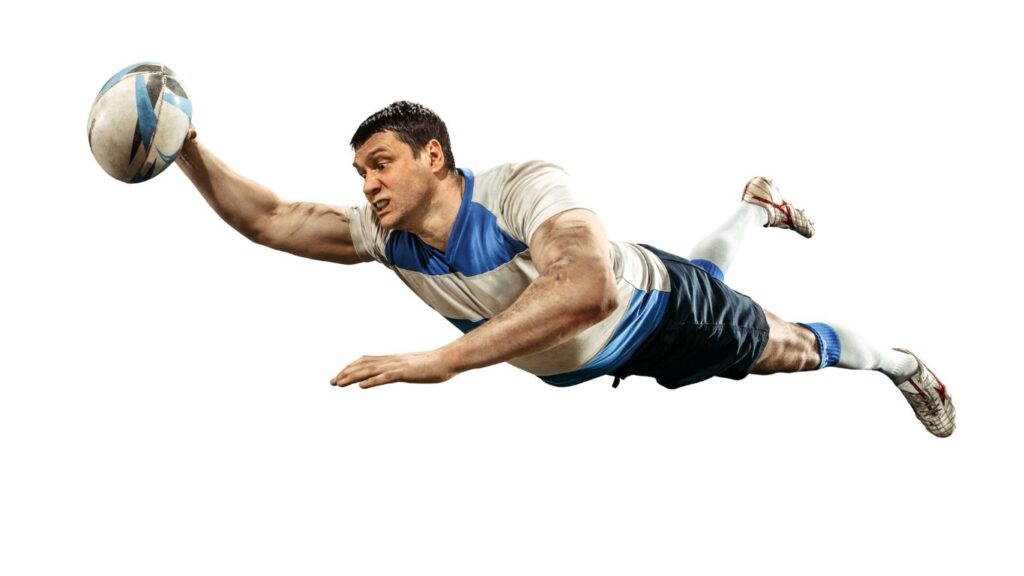The hip-drop tackle is a quintessential rugby skill. It offers a stable and secure technique to control the opponent during crunch times on the field. This method of tackling bolsters efficiency and dramatically enhances the safety of the ball carrier and the tackler. Designed for players who have honed the fundamentals of tackling, hip drop tackle is a next-level skill that combines precision, power, and prudence.
Step-by-Step Execution of a Hip Drop Tackle

Here is your guide to effectively executing a hip drop tackle:
- Approach with Balance: Position yourself at a slight angle to the ball carrier, with your feet shoulder-width apart for a stable stance. Your posture should be ready to move, akin to a coiled spring.
- Aim and Impact: Zone in on the hip of the ball carrier. Your lead shoulder is your primary tool for making contact and absorbing the initial impact.
- Drop and Dominate: As contact is established, dynamically drop your hips to a level lower than the ball carrier’s. This creates a formidable foundation for your tackle.
- Wrap and Secure: Reach out and wrap your arms around the carrier’s legs, preferably locking in at the thigh area. A firm grip is crucial to prevent any attempt to escape.
- Drive Forward: Propel your legs forward, carrying through with the momentum gained from the low hip position, grounding the ball carrier with determined force.
- Head Positioning: Keep your head to the side, away from the carrier’s legs. This fundamental aspect of the tackle is critical to preventing head or neck injuries.
- Post-Tackle Quickness: Once the tackle is consummated, waste no time getting back on your feet. Be ready to contest for the ball or prep for the next phase of play.
Safety Considerations in the Hip Drop Tackle
- A low center of gravity helps maintain balance and lowers the risk of head collisions.
- Controlled body movement emphasizes safety through proper technique, ensuring that raw aggression does not overpower precision.
- Players are guided to wrap rather than ram, avoiding unnecessary force which could cause injuries.
- Regular training and drills are recommended to build muscle memory and confidence in safely executing the hip drop tackle.
Video Guide for Visual Learning
In addition to reading about the process, a visual understanding can be beneficial. Experts recommend viewing step-by-step video guides to observe this technique’s refined motion and integration in real-game situations.
Watch Hip Drop Tackle Video Guide
Frequently Asked Questions (FAQs)
How do I avoid getting injured while performing a hip-drop tackle?
Proper technique and practice are essential for hip drop tackle safety. Keep your head to the side to avoid direct contact, maintain a low center of gravity throughout the tackle, and always wrap your arms securely. Regular training under supervision can also reduce the risk of injury.
Can the hip-drop tackle be used in all playing positions?
The hip drop tackle is a versatile skill beneficial across all playing positions. However, its application may vary slightly depending on the specific role and scenario in the field.
How often should I practice the hip drop tackle to master it?
Consistency is vital to mastering the hip-drop tackle. Incorporate this technique into your regular training sessions, aiming for at least two focused weekly practices. Over time, as your muscle memory and confidence grow, you can adjust the frequency accordingly.
Is the hip drop tackle legal at all levels of rugby?
The hip drop tackle is legal and encouraged across all levels of rugby, provided it is executed correctly and safely. Familiarize yourself with the latest rugby laws to ensure compliance during matches.
What is the most common mistake made when learning the hip drop tackle?
One of the most common mistakes is needing to get higher during the tackle. This can compromise the tackle’s effectiveness and increase the risk of injury. Focus on dropping your hips below the level of the ball carrier to ensure a solid and safe tackle.
Conclusion
Whether you are:
- A seasoned professional or a keen amateur.
- Incorporating the hip drop tackle into your defensive arsenal requires practice and guidance.
- An unwavering commitment to safety.
When executed with proficiency, it’s a formidable move that underlines a player’s tactical understanding and respect for the game’s physicality. Remember, rugby is a contact sport where safety always triumphs – on the pitch, every player’s well-being is paramount.









